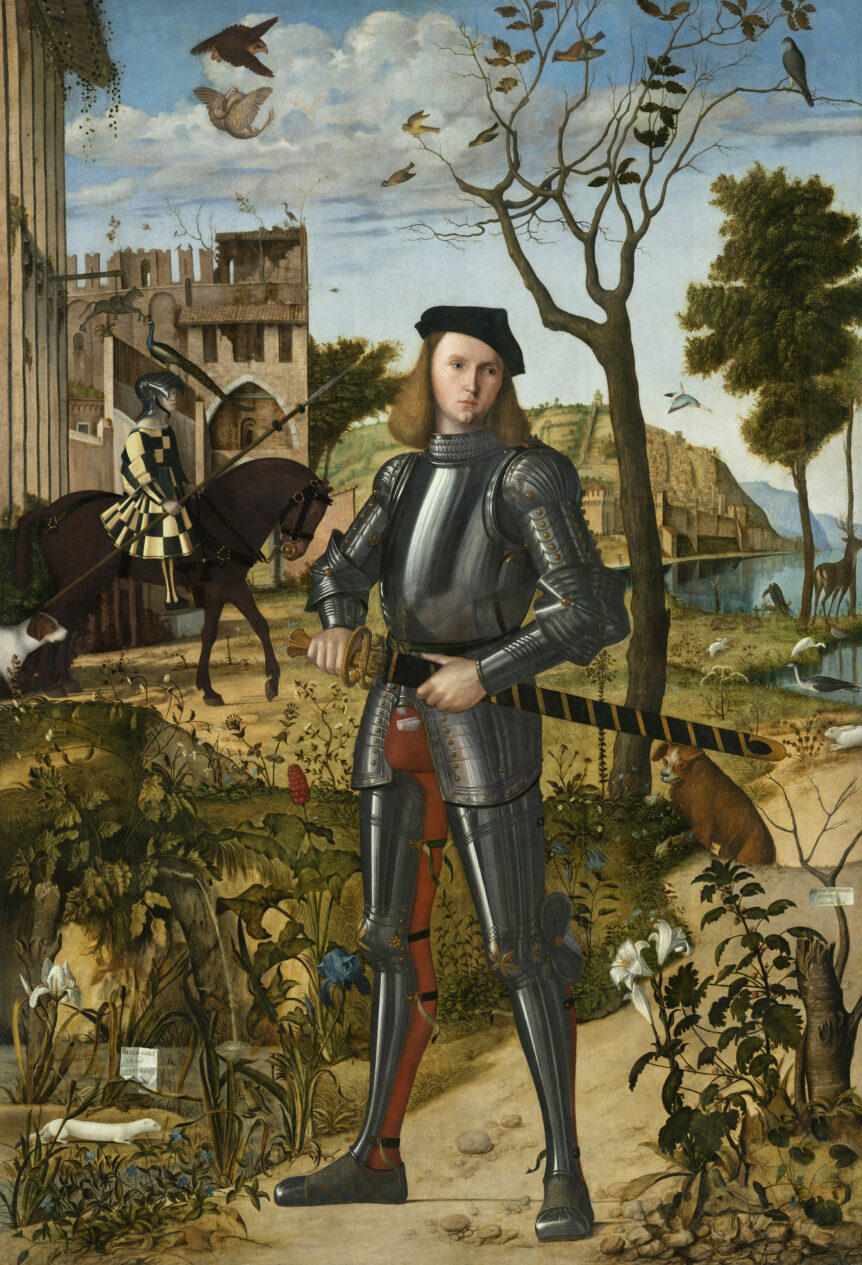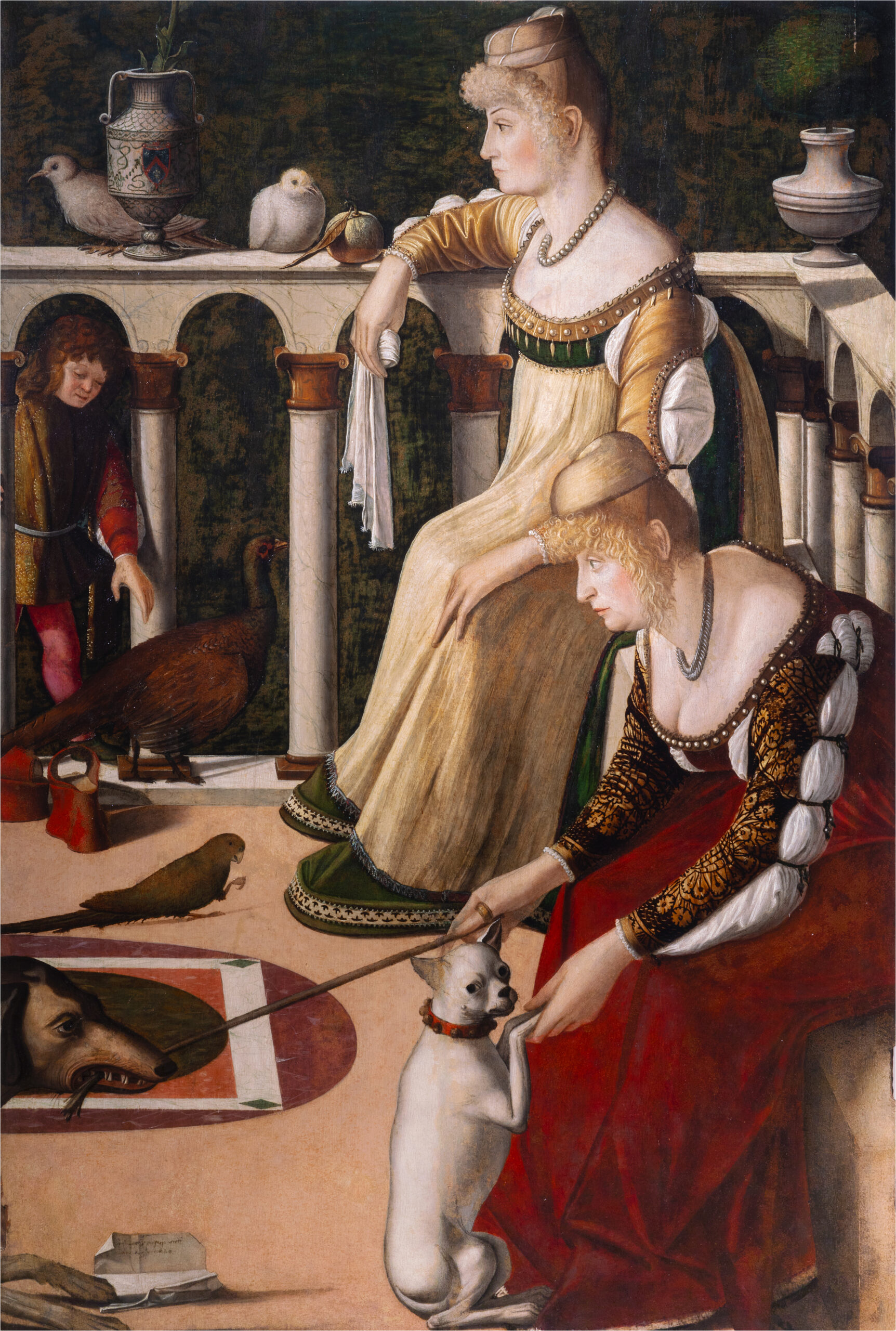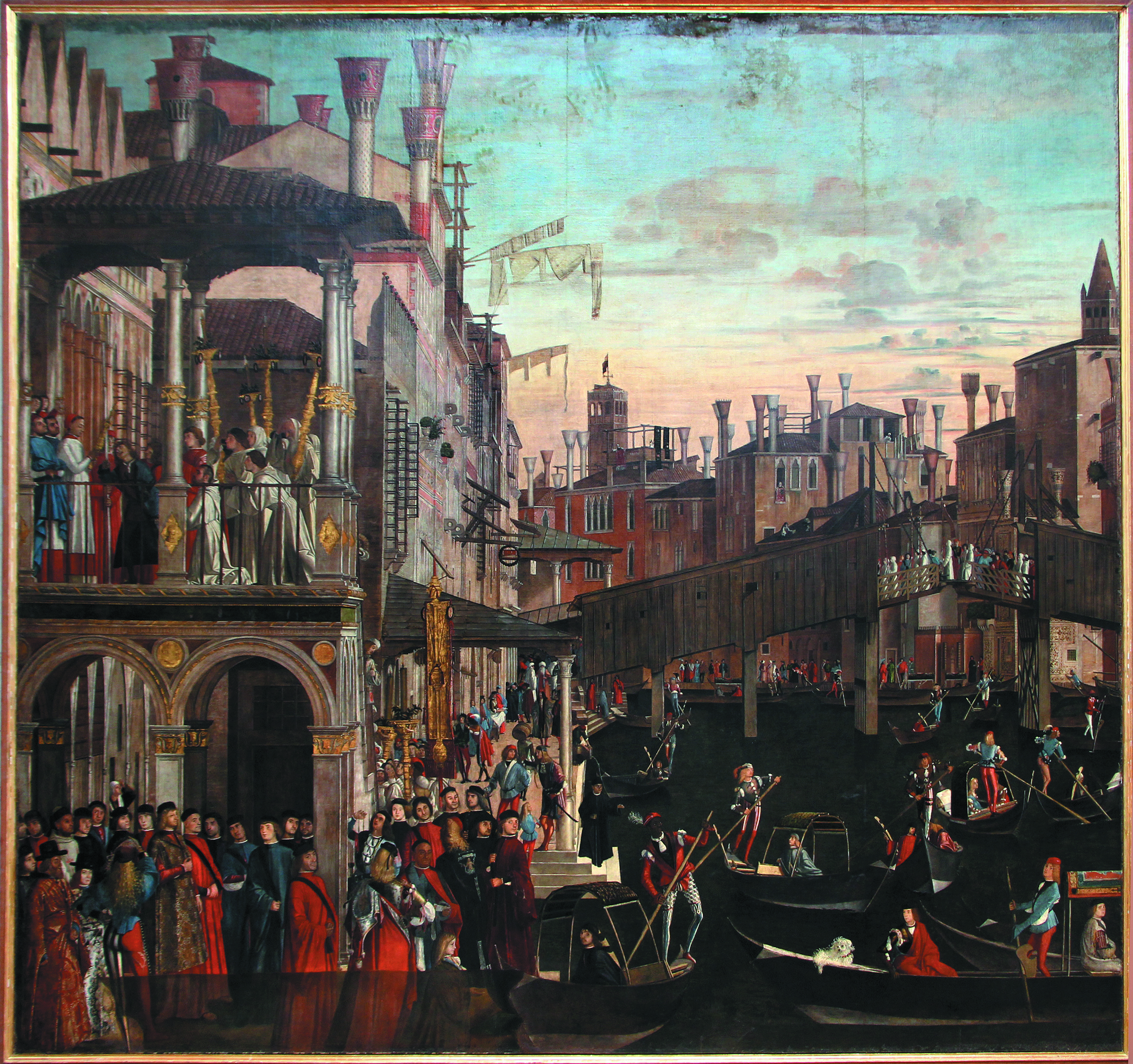
Fig. 1. Miracle of the Possessed Boy at Rialto by Vittore Carpaccio (1460–before June 1526), c. 1494–c. 1496. Oil on canvas, 12 feet 4 inches by 12 feet 10 3/8 inches. Photograph by Sailko on Wikimedia Commons.
Few painters have experienced as great a fluctuation in their posthumous fortunes as Vittore Carpaccio, the subject of a current exhibition at the National Gallery of Art in Washington, DC. Even in his own time, despite being highly successful and prolific, he never commanded the same reverence as Bellini, Titian, or Veronese. And for most of the next five centuries, following his death in about 1525, he has continued to fall far short of their renown.
But in the last decades of the nineteenth century Carpaccio had his moment, and it was quite a moment. John Ruskin declared that his early depiction of Two Women on a Balcony—the first work one encounters in the Washington show—was nothing less than “the best picture in the world” (Fig. 3). Henry James, who rarely agreed with Ruskin on anything, claimed that it would be “ridiculous” to speak of Venice “without making [Carpaccio] almost the refrain.” And Marcel Proust mentioned the artist no fewer than thirteen times in In Search of Lost Time. But that moment passed and Carpaccio, though still admired today by specialists, has largely sunk back into that obscurity from which the present exhibition aspires to rescue him. Mounted in coordination with the Museo Correr in Venice and curated by Peter Humfrey, an esteemed scholar of Renaissance Venetian art, the Washington show contains nearly a hundred paintings and drawings, and it will include even more when it opens in March at the Palazzo Ducale in Venice.
Carpaccio’s work reveals an important difference between the Renaissance painters of Venice and those of Florence and Rome. While the latter conceived their cities largely in abstract terms and viewed them through the lens of history and myth, the painters of Venice—especially Carpaccio—reveled in the rich and irreducible specificity of their home, and they rarely passed up an opportunity to depict it on a maximalist scale. One of Carpaccio’s finest works, the Miracle of the Possessed Boy at Rialto (Fig. 1), is an almost photographic record of the famous Rialto Bridge, nearly a century before it assumed its present form. There is something almost Netherlandish in the plenitude of Carpaccio’s detail: far in the distance, beyond the splendidly appareled gondoliers in the foreground and the wooden bridge of the title, a woman can be seen beating the dust out of an old carpet.
What distinguishes this work, as well as Saint Augustine in his Study (Fig. 2), is that both feel large enough for a human being to step into them and inhabit them. The same could be said for such later works as Titian’s Pesaro Madonna and Veronese’s Feast in the House of Levi. Those works, like so many of Carpaccio’s larger canvases, seem closer to theatrical backdrops than to ordinary two-dimensional art. In this respect, Carpaccio is part of a long and fundamentally Venetian tradition that starts with the thirteenth-century Portale di Sant’ Alipio on the facade of Saint Mark’s Basilica—curiously a depiction of Saint Mark’s Basilica itself—and ends in the masterful eighteenth-century cityscapes of Antonio Canaletto and Bernardo Bellotto.
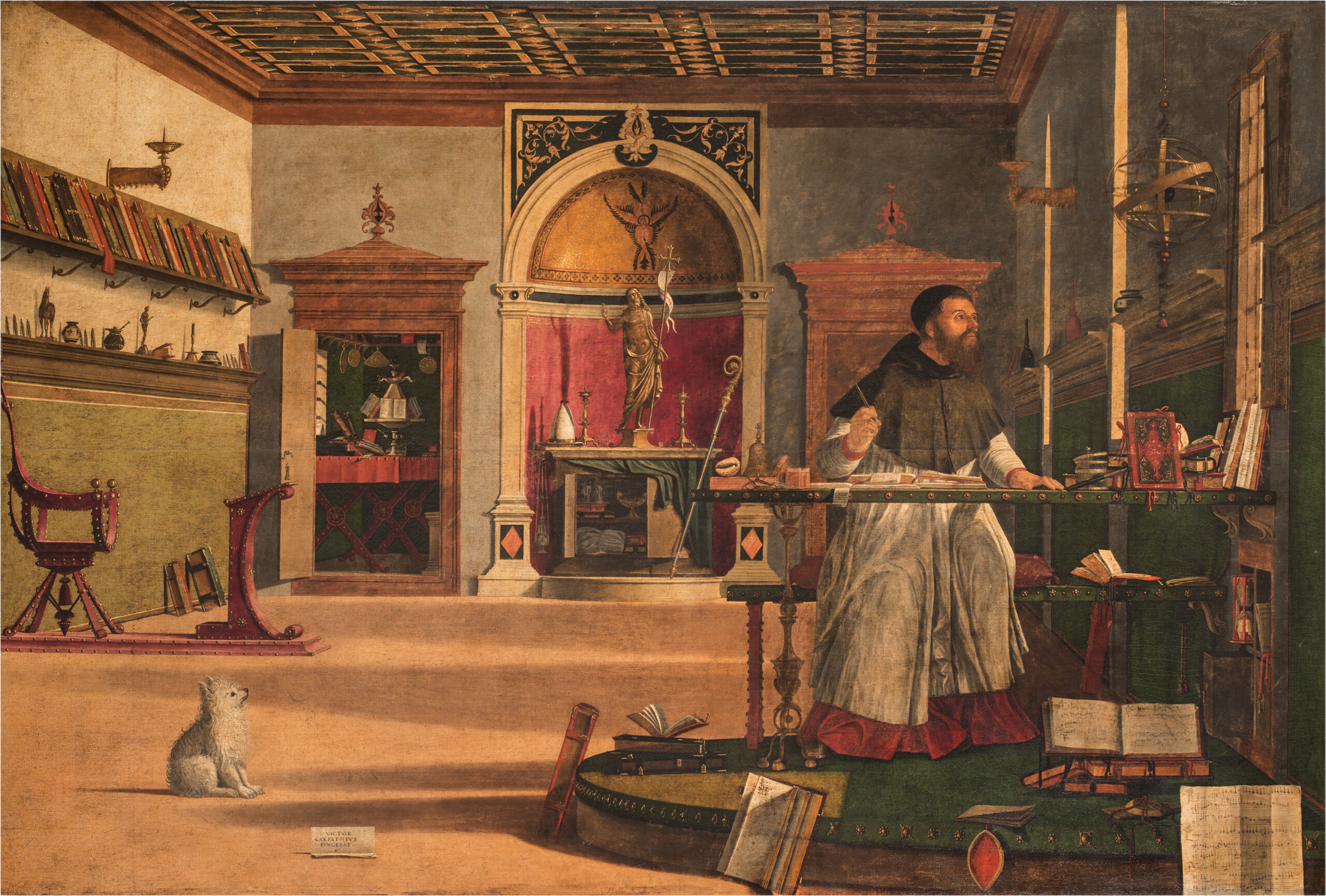
Fig. 2. Saint Augustine in His Study, shortly after 1502. Oil and tempera on canvas, 55 1/2 by 83 1/8 inches. Scuola Dalmata dei Santi Giorgio e Trifone, Venice; photograph by Matteo De Fina. Except as noted, photographs are courtesy of the National Gallery of Art, Washington, DC.
Of course, not all of Carpaccio’s works were so intensely focused on Venice, nor were they necessarily on a vast scale. Many of his paintings were created for private devotion or secular pleasure. Much like Two Women on a Balcony, other works, such as Virgin Reading, or the superb Young Knight (Fig. 4), in the Thyssen Bornemisza Collection in Madrid, show what he can do on a more intimate scale. As the Washington show also reveals, Carpaccio was a fine and prolific draughtsman whose drawings survive in greater abundance than those of any of his contemporaries. It is amazing, if one thinks about it, that a fragile slip of paper containing the artist’s jottings regarding a figure or a rough composition in his Saint George or Saint Ursula cycle should have survived the tumultuous disruptions of five centuries and are now on view in the National Gallery. They are not often seen publicly, and their appearance in the present exhibition is surely one of its most powerful draws.
But if Carpaccio occasionally worked on a humbler scale, the context of his greatest successes were the multi-canvas series he painted for several of the most eminent scuole—secular civic associations—that were so essential to the cultural life of Renaissance Venice. Indeed, no painter labored more assiduously for such organizations than Carpaccio. In addition to contributing Miracle of the Possessed Boy at Rialto to the True Cross Cycle for the Scuola di San Giovanni Evangelista, he completed four such commissions entirely on his own: nine canvases depicting the life of Saint Ursula for the no-longer extant Scuola di Sant’ Orsola; nine of Ursula that are still housed in the Scuola di San Giorgio degli Schiavoni; six depictions of the life of the Virgin formerly in the Scuola degli Albanesi; and the four surviving depictions of the life of Saint Stephen. It is a tribute to the National Gallery and the curator that ten of these large and irreplaceable paintings (including all six canvases of the life of the Virgin) are now on view in Washington.
“Emotionalism is distinctly foreign to Carpaccio’s cool temperament. His dragons, for all their nightmarish specificity, do not terrorize and his lions feel as tame as a tabby cat”
Fig. 3. Two Women on a Balcony, c. 1492/1494. Oil on panel, 37 1/4 by 25 inches. Fondazione Musei Civici di Venezia, Museo Correr, Venice.
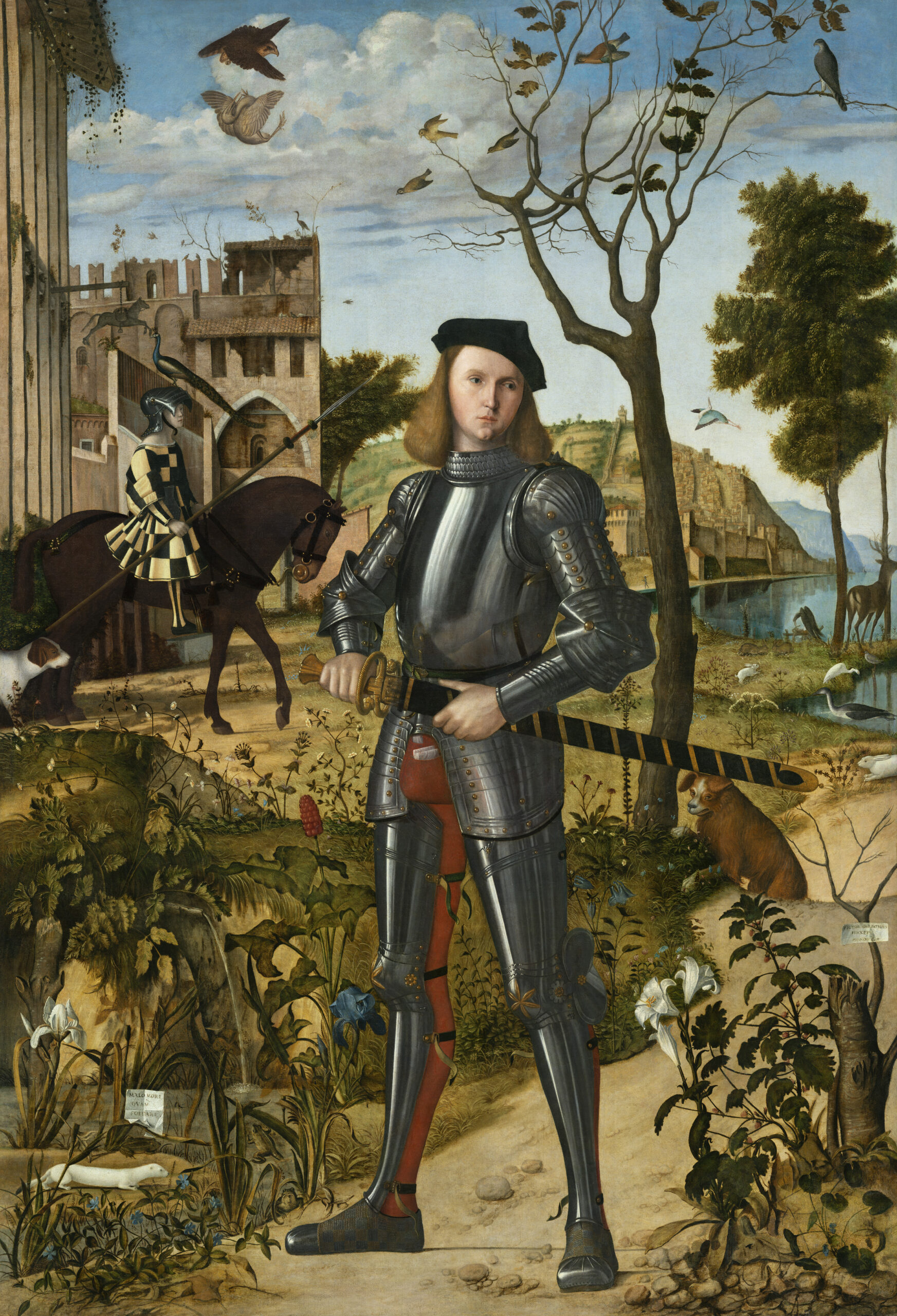
Fig. 4. A Young Knight, 1510. Oil on canvas, 85 7/8 by 59 1⁄2 inches. Museo Thyssen-Bornemisza, Madrid; photograph © Museo Nacional Thyssen-Bornemisza, Madrid.
More often than not, they demonstrate that, although Carpaccio was an essentially Venetian artist, he differed fundamentally from his compatriots. That thrilling summa of details, those large, brightly colored costumes and headdresses and exotic animals, are not entirely unparalleled among his fellow Venetians, but they look sideways to a separate tradition, an almost illustrational impulse much in vogue in the final years of the quattrocento. Rather than the humanistic spirit of Giovanni Bellini and Titian—in the sense of their probing humanity—there is in Carpaccio a willing surrender to the enticements of surface and detail that finds a parallel in such Tuscan painters as Pinturicchio and Benozzo Gozzoli.
At the same time, no other Venetian painter was as committed to one-point perspective as a mathematical art, rather than a mere intuition, as Carpaccio. But in works like Saint Augustine in his Study, Carpaccio displays as precise a discipline as Uccello and Massaccio did two generations before him. A corollary to that passion for perspective is the esprit geometrique that defines his work. In a very general way, the artists of Renaissance Venice were given to sentiment, and with it to curvature. But such emotionalism is distinctly foreign to Carpaccio’s cool temperament. His dragons, for all their nightmarish specificity, do not terrorize and his lions feel as tame as a tabby cat. And yet, his compositions are arranged along as precise a grid as we find in Poussin or Cézanne, or, for that matter, analytic cubism.
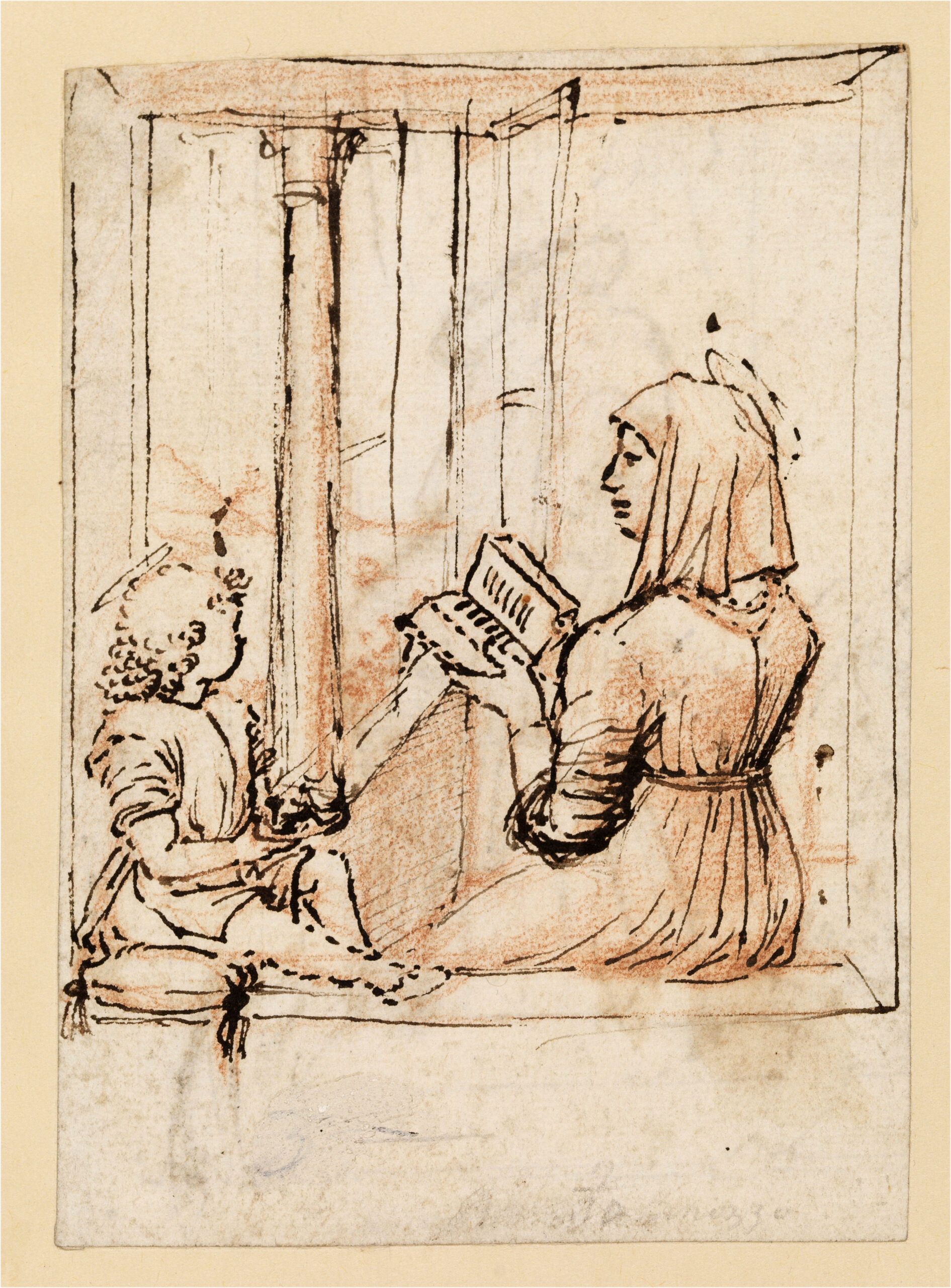
Fig. 5. Virgin Reading with the Christ Child (recto) Virgin Adoring the Child with the Young Baptist (verso), c. 1496–1497. Pen and brown ink over red chalk, on laid paper, 5 1/8 by 3 3/4 inches (sheet). Samuel Courtauld Trust, Courtauld Gallery, London; photograph courtesy of Bridgeman Images.
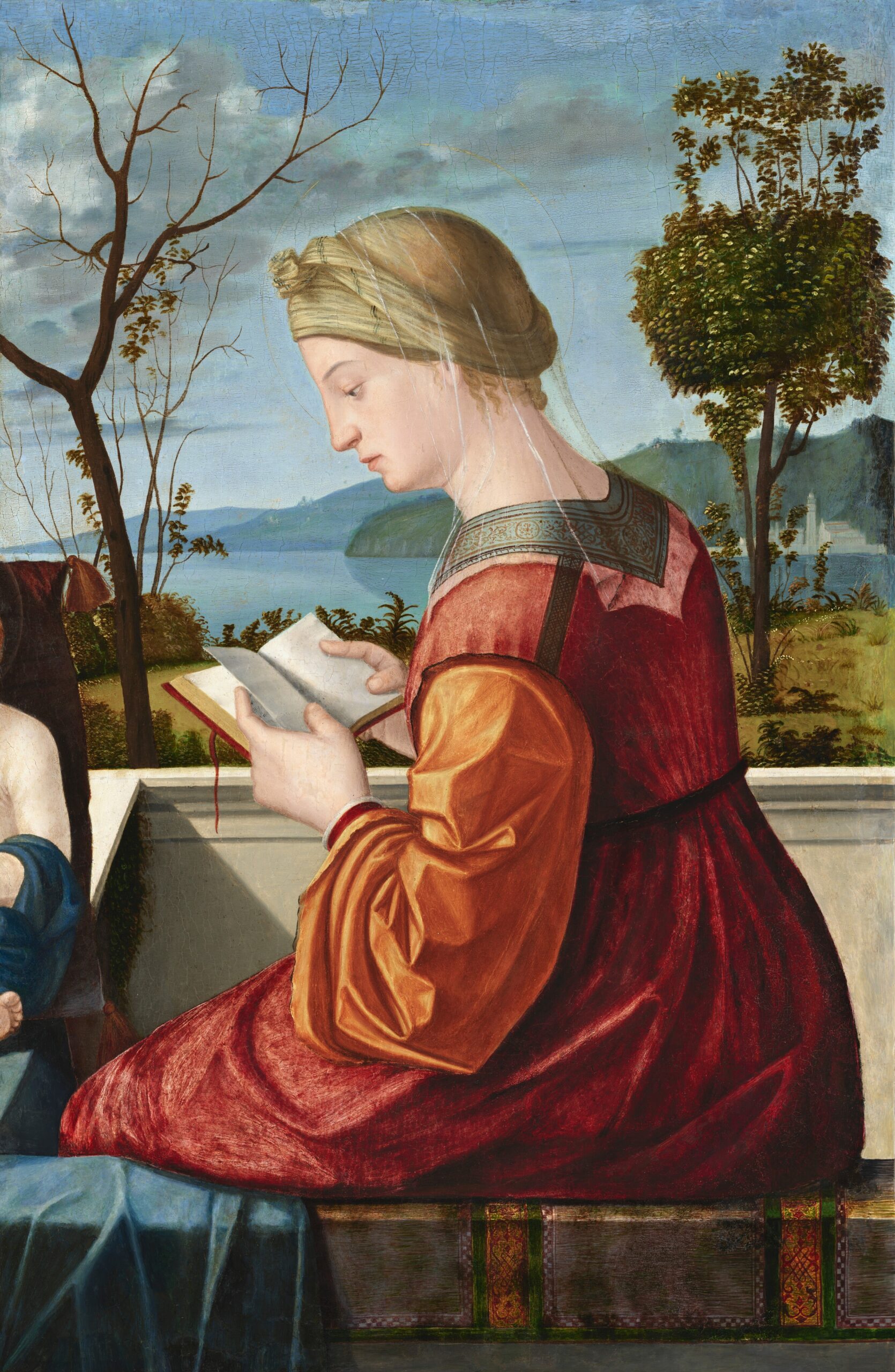
Fig. 6. Virgin Reading, c. 1510. Oil on canvas transferred from panel, 30 3⁄4 by 20 1/8 inches. National Gallery of Art, Washington, DC, Samuel H. Kress Collection.
But when all is said and done, there emerges from Carpaccio’s art a universe that is all his own. Although he does not scruple to invent buildings and landscapes from whole cloth, no painter ever provided a more compelling account of Venice as a Byzantine, Medieval, and early Renaissance city, with its crazy quilt of polychrome marbles and extravagant forms. And he does so at the moment when that older city is on the verge of vanishing: one generation later, architect and sculptor Jacopo Sansovino would remake it according to the grand manner that reigned in Rome, transforming it into the pale marmoreal vision that we know today as the city of Venice. Were it not for Carpaccio and the testimonials of his art, we might never be able to imagine the beauty that it replaced.
Vittore Carpaccio: Master Storyteller of Venice is on view at the National Gallery of Art in Washington, DC, until February 12 and will be on view at the Palazzo Ducale in Venice from March 18 to June 18.

